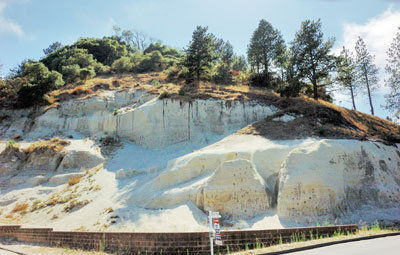
On Aug. 3, the Scotts Valley City Council — absent Mayor Dene Bustichi — voted 4-0 to approve a plan that will allow property owners living in the city’s sand hills to obtain building permits with less red tape.
The sand hills are the habitat of the endangered Mount Hermon June beetle.
“This is a real asset to the people living on those sandy soils,” said Councilwoman Stephany Aguilar. “People weren’t able to do simple things like fix a fence.”
The plan, which is a joint agreement among the city of Scotts Valley, Santa Cruz County and the U.S. Fish and Wildlife Service, affects more than 1,500 tracts in Scotts Valley and calls for property owners to pay a $7.77 fee per square foot of permitted building additions.
These fees are called “conservation credits” and are used to directly fund the Zayante Sandhills Conservation Bank, a sizable section of the Zayante sand hills bought and set aside specifically for the benefit of local endangered plants and animals.
Since the Mount Hermon June beetle made the endangered species list in 1997, residents of Santa Cruz County who own property on the sandy soil the rare insect calls home have had something of an environmental nightmare on their hands when it came to gaining permission to build.
According to Owen Lawlor of the Zayante Sandhills Conservation Bank, without the conservation credit program in place, getting building permits required landowners to contact the Fish and Wildlife Service to put together their own conservation plans — a process that could last years and cost many thousands of dollars.
Once the plan gets final approval from the Fish and Wildlife Service, according to Senior Planner Taylor Bateman, homeowners will be able to simply buy the conservation credits at City Hall as they take out building permits, saving time and money.
“It’s a pretty major step,” Lawlor said of the plan’s approval. “It’s a win-win for the species and for the homeowner.”
Councilman Jim Reed also applauded the plan, describing it as the fruition of years of hard work.
“This is the best of both worlds,” Reed said. “(Homeowners) don’t have to wait two years for the federal government to decide if they can add to their deck.”
To comment, e-mail reporter Joe Shreve at jo*@*********er.com, call 438-2500 or post a comment at www.pressbanner.com.












